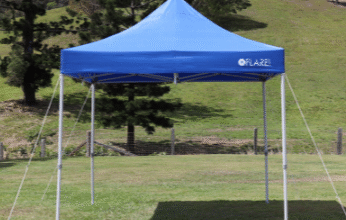Lake Water Treatments: The Key to a Healthy, Balanced Aquatic Environment

Lake water treatments play a critical role in maintaining the ecological balance, water clarity, and overall health of natural and man-made lakes. Whether you’re managing a private estate lake, recreational fishing lake, or a public body of water, effective treatment solutions are essential to control algae, improve oxygen levels, reduce sludge, and prevent foul odours.
With rising temperatures, nutrient runoff, and increased use of water bodies, the demand for effective lake water management has never been higher. This article explores proven strategies, tools, and products for sustainable lake water treatments.
Why Lake Water Treatments Are Necessary
Over time, lakes can become overloaded with organic matter such as leaves, algae, fish waste, and runoff containing fertilizers and pollutants. This buildup leads to problems such as:
- Algae blooms and murky water
- Low oxygen levels harming aquatic life
- Bad odours from anaerobic digestion
- Excessive weed growth
- Invasive species colonization
Without proper treatment, these issues can degrade the lake’s aesthetic, recreational, and ecological value.
Core Objectives of Lake Water Treatment
The primary goals of lake water treatments are:
- Restoring water clarity
- Balancing aquatic ecosystems
- Reducing sediment and sludge
- Controlling algae and weed overgrowth
- Increasing dissolved oxygen levels
- Maintaining fish and plant health
Top Lake Water Treatment Methods
1. Biological Treatments with Beneficial Bacteria
One of the most environmentally friendly solutions is using aerobic bacteria treatments. These microbial formulations digest organic sludge, convert ammonia and nitrates, and outcompete harmful algae for nutrients.
Benefits:
- Natural, safe, and non-toxic
- Reduces organic muck and odour
- Helps restore the lake’s ecological balance
Popular forms include liquid bacteria, pellets, or water-soluble bags that target the lakebed.
2. Aeration Systems for Oxygenation
Aeration is essential in larger bodies of water to ensure adequate oxygen distribution throughout the lake, especially in deeper areas. Low oxygen can lead to fish kills and anaerobic zones that produce toxic gases like hydrogen sulphide.
Types of Aeration Systems:
- Surface fountains: Add visual appeal while increasing surface oxygen.
- Bottom diffused aerators: Ideal for deep lakes, they circulate oxygen from the bottom up.
- Solar aeration systems: Eco-friendly and perfect for remote locations.
3. Algaecides and Herbicides (Use with Caution)
In some cases, chemical treatments may be necessary for fast action against algae and weeds. Modern algaecides are increasingly formulated to be safer for aquatic life, with many now offering copper-free options to minimize toxicity.
Use Guidelines:
- Always follow dosage and safety instructions
- Use targeted treatments to avoid harming beneficial flora and fauna
- Combine with biological methods for long-term prevention
4. Nutrient Control and Phosphorus Locking
Excess phosphates and nitrates from lawn runoff, fertilizers, and animal waste often fuel algae blooms. Using phosphorus-locking agents, such as aluminum sulfate or lanthanum-modified clay, can reduce nutrient availability in the water.
This proactive treatment limits algae growth and helps maintain long-term water clarity.
5. Mechanical Weed and Muck Removal
In heavily impacted lakes, mechanical dredging or harvesting may be needed to remove dense vegetation or compacted sludge. While more invasive and costly, this approach delivers immediate results and creates a clean foundation for other treatment methods.
6. Floating Islands and Native Plants
Strategically placing floating plant islands or planting native aquatic vegetation helps naturally absorb nutrients and stabilize the shoreline, creating habitats for wildlife and improving water quality over time.
When to Apply Lake Water Treatments
Lake treatments are typically most effective when applied during spring and early summer, as temperatures rise and biological activity increases. However, year-round maintenance is essential:
- Spring: Bacteria seeding and nutrient balancing
- Summer: Algae control and oxygenation
- Autumn: Debris management and sludge treatment
- Winter: Aeration to prevent stratification and ice damage
Customized Treatment Plans for Every Lake
Each lake is unique in depth, size, inflow sources, and biological activity. Professional assessment and water testing can help determine the best combination of products and strategies for long-lasting, clean, and balanced water conditions.
For larger or more complex lakes, consult water management specialists who can design tailored treatment programs based on scientific analysis.
Conclusion
Clean and healthy lake water doesn’t happen by chance—it’s the result of smart, sustainable lake water treatments. With the right balance of biological, mechanical, and sometimes chemical solutions, you can restore water clarity, protect aquatic life, and enjoy the full benefits of your lake all year round.
Consistent maintenance, responsible planning, and the use of eco-safe technologies ensure that your lake remains a beautiful and vital ecosystem for generations to come.





